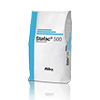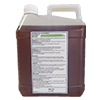
Liver Abscess
Liver abscesses are seen in all ages and breeds of cattle wherever cattle are raised. They are most common in feedlot and dairy cattle fed rations that predispose to rumenitis. Cattle with liver abscesses have reduced production efficiency. Affected livers are condemned at slaughter, and adhesions to surrounding organs or the diaphragm may necessitate carcass trimming. Liver abscesses can also lead to disease syndromes associated with posterior vena caval thrombosis.
Rumenitis is usually the result of rapid intraruminal fermentation of dietary carbohydrate with subsequent production of lactic acid and increased acidity of the ruminal fluid (“grain overload”). Rations with high levels of carbohydrate are the principal cause in both dairy and feedlot cattle, but the texture of the feed and method of feeding can be modifying factors. The incidence of rumenitis in feedlot cattle is significantly higher when the cattle are transferred directly from a roughage ration to a finishing ration, and when there is poor feed bunk management. F necrophorum, alone or with other bacteria, colonizes through the area of superficial necrosis produced by the acid rumen contents. Leukotoxin may facilitate resistance to phagocytosis. Bacterial emboli from the lesions invade the hepatic portal venous system and are transported to the liver, where they can establish infectious foci of necrobacillosis that eventually develop into abscesses.





